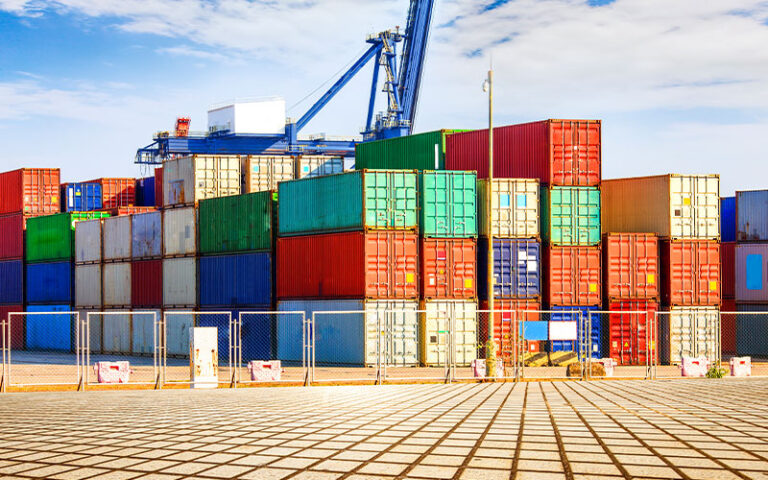In the shipping industry, packaging and handling are an integral part of how your shipments arrive safely. If you’re buying a shipping container, you need to know if the units you buy are cargo-worthy, safe, and secure.
You not only have to consider the sender and receiver of your shipments but the many people in between who work at job sites, terminals, and on cargo ships to successfully deliver your load. A proper shipping container is a priority.
You may not want your shipping container specifically used for moving goods. Modified shipping containers can help you move unusually shaped shipments, but they can also work as impromptu work or living spaces, labs, or extra storage.
Here are some tips on choosing modified shipping containers, from the type of container to the size.
Standard Shipping Containers
Shipping container types are identified by their size and style. The most common sizes are 10’, 20’, or 40’ long. The 10’ long containers are slightly harder to find than the other two dimensions. Unless you have a unique application for a shipping container, a 20’ or 40’ container will suffice for almost any use.
In terms of height, you can get the standard 8.6’ tall container or opt for a high cube-style shipping container, which is 9.6’ tall. These types of storage areas are also referred to in the business as HC for a high cube.
Other standard shipping containers are double-door or open side door, or open-top or hard top containers. You can also use flat rack containers, which accommodate hefty loads.
Shipping container
This term is the most commonly used and the broadest term that refers to all types of containers used to transport goods from one point to another.
Ocean container or sea container
These containers are specifically designed to transport goods across the oceans and are often made from corrosion-resistant materials.
Inter-modal container
This type of container is built for many different shipment travel types like ocean, rail, or road shipments.
ISO container
This type of container is designed to comply with the specifications of the International Organization for Standardization.
Cargo containers
These shipping units have been certified to transport goods across the ocean.
One-trip containers
These containers have only made one trip across the seas and are the most commonly modified to use as a cost-effective workspace or water-tight storage.
Used containers
Excellent for storage applications, used containers have quite a bit of wear and tear after traveling back and forth across the oceans several times.
Reefers
These refrigerated containers are used to transport temperature-sensitive items like food or pharmaceuticals.
Modified Container Uses
You can use modified containers for different applications that you might not have thought of, like portable restrooms, temporary office space, or mobile labs. They also can be used for industrial equipment storage or first response units.
These sea cargo containers have been used to build sheds and even homes as they are eco-friendly and easy to use. You can use sea containers as an add-on to your house or as a mobile office if there are renovations occurring at your place of business.
You can put lockboxes or a security lock on your modified shipping container. Some units, like reefers, have door seals, which makes them ideal for storing sensitive material. By reusing container units, you give them a longer life than just using them for shipping.
Many people looking for modified shipping containers opt for one-trip containers that have only traversed the oceans once, so they’re not as worn as other choices.
The Final Word
Cargo containers are an integral part of the shipping industry. These mighty storage units aren’t only suitable for moving goods back and forth across the oceans; they also can be modified for various different uses.
If your business could use an extra-strong, durable, and eco-friendly option for a temporary office or storage, consider one of the many types of shipping containers you can modify to suit your needs.
This is another reason where you need ABN Cargo LTD., expertise to save your goods.
Top Ways to Get the Best Freight Shipping Rate
Securing the lowest freight shipping rates while maintaining timely and efficient deliveries is a constant challenge. E-commerce continues to contribute to the ever-growing global marketplace, and customers have never had higher expectations from suppliers. Goods are expected to be delivered quickly and cheaply. Global trade became very competitive in modern era.
Businesses must find a way to ensure speedy and safe deliveries without breaking the bank on shipping costs. With multiple variables to consider, keeping freight costs at a minimum is now a precise balancing act. Companies must focus on important factors such as product dimensions, density, freight class, packaging, insurance coverage, and storage facilities.
Prior planning and organization play a critical role in achieving reasonable carrier rates. The more time you have and the more planning involved increases your chances of gaining good rates. The following list explains several more ways your organization can source the best freight shipping rates.
Look Out for Spot Rates
Spot rates are late notice offerings that are generally priced significantly lower than regular contracted shipping rates. They are usually dependent on available capacity, meaning they won’t always suit your needs.
Highly organized importers may not benefit from spot rates too often, but they can be useful at times. Spot rates can be requested in certain instances, so don’t hesitate to ask your freight service company.
Choose a Reputed Freight Company
It’s always advantageous to get freight quotes from multiple carriers. However, rates don’t always denote value, particularly in the long term. Some freight carriers offer reduced rates but are renowned for poor service and delayed delivery times. Whether you choose rail, road, ocean, or air freight, ensure that you go with a reputed company.
Research options in advance, and pay attention to reviews, experience in your industry, services offered, including customs clearance, freight consolidation, tracking, packing, storing global network, and customer service.
Efficient Packaging
Packaging plays a significant role if you want to ship freight at the best rate possible. Bulky or heavy packaging materials can cost unnecessary additional charges.
Ensure all items are packed in appropriately sized containers that maximize protection while taking up the minimum amount of space. Opt for stackable containers to avoid interlocking, pyramiding, and rotating layer patterns.
Focus on the Data
Achieving value in modern logistics is primarily down to data analysis and an efficiency focus. When shipping your goods, freight companies utilize the latest logistics technology to map out the most effective warehouse operations, routes, schedules, and logistics strategies.
If you wish to approach shipping unassisted, ensure that you focus on the data, use a warehouse management system (WMS), and use logistics technology to achieve maximum efficiency.
In Bangladesh, it’s vital to seek value over a low price. While cheap rates can look good on the surface, they are often masking a poor overall service. Opting for low-cost over value can cause long-term harm to your business.
As a world-class international shipping company, ABN Cargo LTD., as a freight forwarder company in Bangladesh can offer information or our expert 3PL services for your business. Call one of our experts today.








